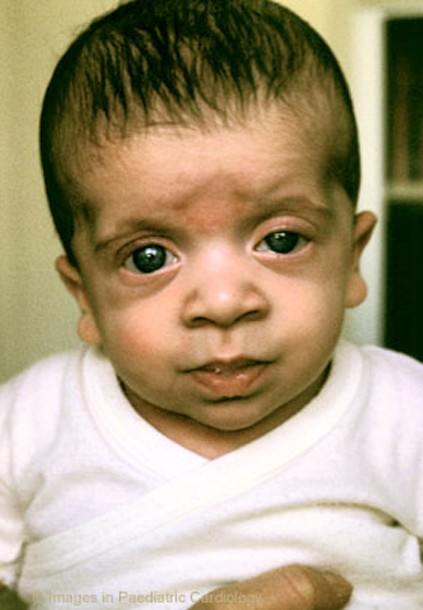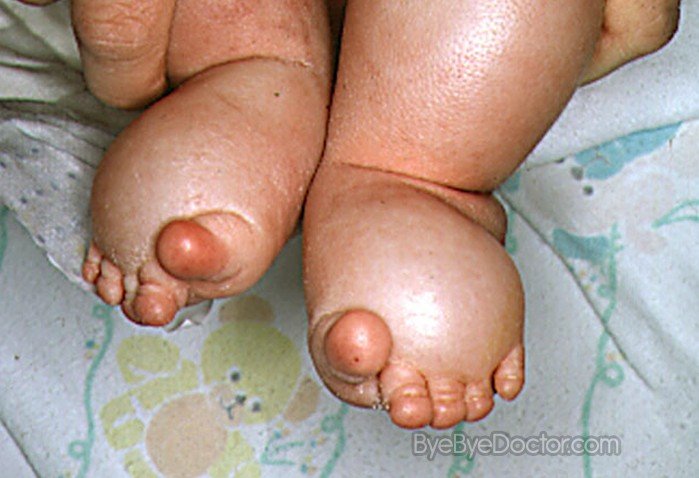Noonan Syndrome
Last reviewed by Dr.Mary on August 7th, 2018.
What is Noonan Syndrome?
This is a disorder that is caused by a mutation that is genetic and stops the usual development in varied areas of the body. This syndrome can affect an individual in varied way such as:
- Facial characteristics that are unusual
- Stature is short
- Defects of the heart
- Other problems physically
- Possible low intelligence
This syndrome occurs when the fetus receives a copy of the gene that is affected from one parent. This is known as “dominant inheritance”. It may occur also as a mutation that is spontaneous, which means that there is no history of this disorder in the family.
There is currently no precise treatment for this syndrome. Treatment is focused on managing the disorder’s symptoms as well as difficulties that can arise. Growth hormone can be needed to manage short stature in certain individuals with this syndrome.
Noonan Syndrome Symptoms
Facial features
The way an individual’s face appears is one of the main clues which leads to the diagnosis of this syndrome. These appearances or signs alter with age:
Early infancy
When the baby is younger than one month old, it can have eyes that are down-slanting and wide set, ears that are low-set, groove that is deep and peaks that are wide in the upper lip, neck that is short as well as a hairline that is low in the back.
Infancy
The baby can have eyes that are prominent that slant downward as well as lids that are thickened and a nose depressed at the top with a base that is wide and a tip that is bulbous.
Childhood
Often there is a lack of any facial expression.
Adolescence
The face is usually wide at the forehead and tapers to a chin that is pointed. Features of the face become sharper as well as the eyes become less perceptible. The neck elongates revealing additional folds of skin – webbed neck or neck that is prominent – trapezuius – muscles.
Adulthood
When an individual with this syndrome becomes an adult, the crease running from the edge of the nose to the corner of the mouth is prominent and the skin can appear transparent and be wrinkled.
Heart disease
Approximately 80% of individuals with this syndrome have heart disease that is congenital, which accounts for some of the key symptoms and signs. Pediatric cardiologists are normally the first physicians to see those with Noonan syndrome. Several types of heart disease that are congenital and linked with this disorder include:
Disorders with valve
Pulmonary valve stenosis is the narrowing of the pulmonary valve, which is the tissue flap separating the right lower chamber or ventricle of the heart from the pulmonary artery that supplies blood to the lungs. This is the most common problem with the heart seen with this syndrome.
Heart muscle thickening – hypertrophic cardiomyopathy
Abnormal thickening or growth of the heart muscle – affects 20% of those with Noonan syndrome.
Other defects
Individuals with this syndrome frequently have structural problems of the heart. These defects include a hole in the wall which splits up the lower 2 chambers of the heart – ventricular septal defect, or another condition causing arteries to narrow – pulmonary artery stenosis.
Growth problems
The child’s birth weight will more than likely be normal but many of these children have problems with feeding causing poor gain of weight until about 18 months old. The spurt of growth that is normally seen during adolescence could be delayed in the child with this syndrome but since this disease makes bone maturity delayed, the child has the probability for growth to continue into the 20s.
Issues with musculoskeletal
Often individuals with Noonan syndrome have chests that are unusually shaped with a sternum that is sunken or raised. A short neck as well as wide-set nipples with webbed neck is also common.
Disabilities with learning
Intelligence is not affected with this syndrome but there is an amplified risk of learning disabilities. But, it is not unusual for individuals to finish high school, go to college and have careers.
Eye problems
These are abnormalities of the eyelids and the eyes. Trademark features are differences in the size and shape of the eyes. The iris may be green or pale blue. There can be problems with the muscles of the eye, refractive problems, movement of the eyes that is rapid and problems with the eye nerves.
Bleeding
Individuals with this syndrome have a history of bleeding or bruising that is abnormal.
Problems with the lymphatic system
This system drains fluid that is excess from the body and aids in fighting infection. The problem that is most common is fluid that is excessive on the top of the feet or the back of the hands.
Kidney and genital problems
Most individuals particular males with this syndrome have problems with genitals as well as kidneys.
Problems with skin
These are varied and include the texture or color of the skin. Those with this syndrome can have coarse, curly hair or hair that is sparse.
Noonan Syndrome Treatment
The treatment of the complications as well as the symptoms which develop with this syndrome hinge on the type as well as the severity. Most issues are treated the same way they are in the population generally.
The approach that might be recommended to deal with various problems with this syndrome can consist of:
Heart treatment
Some drugs can be very effective in the treatment of different types of heart problems. Surgery can be necessary if there is valve involvement.
Treating low growth rate
The child’s height needs to be checked 3 times each year until they are 3 years old and then once each year until adulthood. The physician will need to check the child’s thyroid function, blood chemistry, hormone levels as well as bone growth. If the growth hormone levels are not sufficient, growth hormone therapy can be a management option.
Disabilities with learning
This covers a varied range of behavioral as well as mental issues. Ask the physician about infant stimulation programs.
Vision
The child will need regular exams every 2 years. Most issues with the eye can be treated with glasses alone.
Treatment for bruising and bleeding
If there is a history, avoid aspirin and products that contain aspirin.
Treatment of urinary tract and genital problems
With males if there are undescended testicles at birth, the physician will refer you to a surgeon to decide whether surgery is suitable.
With urinary tract infection – treatment is with antibiotics.
Prognosis
The prognosis of the syndrome is dependent largely on how extensive the varied medical difficulties are, especially the defects of the heart. Individuals who have a severe type of this condition can have a life span that is greatly shorter than those with minor problems. Additionally, occurrence of mental deficit in 25% of individuals will affect any long term prognosis.
Noonan Syndrome Life expectancy
Life expectancy depends on the complications involved during the life of an individual with this syndrome as well as the severity of those complications. Limited studies of health-event patterns submit that life expectancy is reduced by approximately 10 years.




Hi, is this syndrome leading to fetal death (IUFD)?